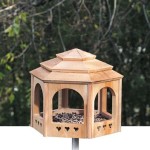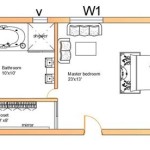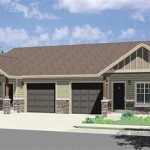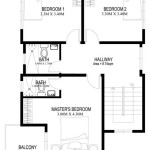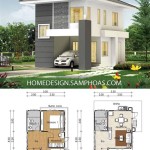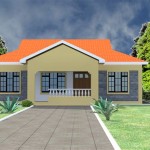House Plans With Porch On 3 Sides: Embracing Outdoor Living
The allure of a home extends far beyond its interior spaces. For many, the transitional zone between indoors and outdoors holds significant appeal. House plans featuring a porch on three sides offer a compelling way to maximize this connection, providing ample opportunities for relaxation, entertainment, and an enhanced appreciation of the surrounding environment. These designs are particularly popular in areas with mild climates, but strategic design modifications can make them viable even in regions with more challenging weather conditions.
The popularity of three-sided porch designs stems from their inherent versatility. Unlike a single front porch, a three-sided porch effectively wraps around the home, creating multiple outdoor living spaces with varying orientations. This allows homeowners to chase the sun, seek shade, or find protection from the wind, depending on their preferences and the prevailing weather. Furthermore, the extended porch area can significantly augment the perceived size of the home without incurring the full cost of adding interior square footage.
This article delves into the key considerations and design elements associated with house plans that incorporate a porch on three sides, exploring aspects such as structural design, architectural styles, material selections, and potential advantages and disadvantages.
Maximizing the Benefits of a Three-Sided Porch
A well-designed three-sided porch is more than just an aesthetic addition to a home. It’s a functional extension of the living space, offering numerous benefits that can significantly enhance the homeowner’s lifestyle. Strategically planning the layout and features of the porch is crucial to realizing its full potential.
One primary benefit is the creation of multiple outdoor living zones. Depending on the orientation of the home, each side of the porch can offer a different ambiance. For example, the east-facing section might be ideal for enjoying breakfast and the morning sun, while the west-facing portion could be perfect for evening cocktails and watching the sunset. The south-facing side often provides the warmest and brightest space, while the north-facing side offers a cool and shaded retreat.
Another advantage is the increased airflow and natural ventilation that a three-sided porch can facilitate. By opening windows and doors onto the porch, homeowners can create a cross-breeze that helps to cool the interior of the home naturally, reducing the need for air conditioning. This is particularly beneficial in warmer climates, where energy savings are a significant concern.
Furthermore, a three-sided porch can enhance the home's connection to the surrounding landscape. By blurring the lines between indoors and outdoors, the porch encourages homeowners to spend more time in nature, enjoying the sights, sounds, and smells of their environment. This can contribute to a sense of well-being and a greater appreciation for the natural world.
Finally, the porch can serve as an excellent space for entertaining guests. The expansive area offers ample room for seating, dining, and socializing, making it ideal for hosting parties, barbecues, or casual gatherings. The porch can also be easily decorated to reflect the homeowner's personal style and create a welcoming and inviting atmosphere.
Structural Considerations for Three-Sided Porch Designs
Constructing a three-sided porch requires careful attention to structural integrity and adherence to local building codes. Proper planning and execution are essential to ensure the porch is safe, durable, and able to withstand the elements.
The foundation of the porch is a critical element. Depending on the soil conditions and the design of the porch, various foundation options may be suitable, including concrete slabs, piers, or a full basement. A concrete slab provides a solid and level surface for the porch floor, while piers offer a more cost-effective solution, particularly in areas with expansive soils. A full basement beneath the porch can provide additional storage or living space, but it also significantly increases the cost of construction.
The framing of the porch must be robust enough to support the roof and any other loads, such as furniture or occupants. Traditional wood framing is a common choice, but steel or composite materials may also be used. The size and spacing of the framing members will depend on the span of the porch and the expected loads. It is crucial to consult with a structural engineer to ensure the framing is adequate.
The roof structure of the porch should be designed to complement the overall architectural style of the home and to provide adequate protection from the elements. Common roof styles include gable roofs, hip roofs, and shed roofs. The roof should be properly insulated and ventilated to prevent condensation and moisture damage. The roofing material should be durable and weather-resistant, such as asphalt shingles, metal roofing, or tile roofing.
Proper drainage is also essential to prevent water damage to the porch and the surrounding structure. The porch should be sloped slightly away from the house to allow water to drain effectively. Gutters and downspouts should be installed to collect rainwater and direct it away from the foundation. The surrounding landscaping should be designed to promote drainage and prevent water from pooling around the porch.
Building permits are typically required for the construction of a three-sided porch. It is important to check with the local building department to determine the specific requirements and to obtain the necessary permits before starting construction. Failure to obtain the necessary permits can result in fines or other penalties.
Architectural Styles and Material Choices
The architectural style of a home significantly influences the design and aesthetics of a three-sided porch. Integrating the porch seamlessly into the overall design requires careful consideration of the existing architectural features and choosing materials that complement the home's style.
For traditional homes, such as Craftsman or Victorian styles, a porch with intricate detailing, such as decorative columns, balusters, and trim, can enhance the home's charm. Natural materials, such as wood and stone, are often used to create a warm and inviting atmosphere. Porch swings, rocking chairs, and other classic porch furniture can further enhance the traditional feel.
For modern homes, a simpler and more minimalist porch design may be more appropriate. Clean lines, geometric shapes, and a focus on functionality are characteristic of modern architecture. Materials such as concrete, steel, and glass can be used to create a sleek and contemporary look. Outdoor lighting can play a key role in highlighting the architectural features of the porch and creating a sophisticated ambiance.
Coastal homes often feature porches designed to take advantage of the sea breeze and the ocean views. Wide, open porches with minimal obstructions are common, and materials such as cedar shingles and weathered wood are often used to create a relaxed and informal feel. Outdoor furniture made from durable, weather-resistant materials is essential in coastal environments.
The choice of flooring material is also an important consideration. Options include wood decking, composite decking, concrete, tile, and stone. Wood decking provides a natural and warm look, but it requires regular maintenance to prevent rot and decay. Composite decking is a low-maintenance alternative that offers the look of wood without the upkeep. Concrete is a durable and versatile option that can be stained, stamped, or polished to create a variety of looks. Tile and stone are elegant and durable choices that are well-suited for outdoor use.
The selection of railings and balusters can also significantly impact the look of the porch. Options include wood railings, metal railings, glass railings, and cable railings. Wood railings offer a traditional and timeless look, while metal railings provide a more modern and sleek appearance. Glass railings offer unobstructed views of the surrounding landscape, while cable railings provide a minimalist and contemporary look.
Ultimately, the best architectural style and material choices for a three-sided porch will depend on the overall design of the home, the homeowner's personal preferences, and the surrounding environment. Careful planning and attention to detail are essential to create a porch that is both beautiful and functional.

Plan 500051vv 3 Bed Country Home With Sided Wraparound Porch

Country Style House Plan With Wrap Around Porch

Beautiful Farmhouse With Wraparound Porch House Plan 6508 Astoria

Plan 82526 3870 Sq Ft Farmhouse Has 3 Bedrooms And

Rustic Ranch Style House Plan 4369 Pine Creek

Beautiful Small Country House Plans With Porches Houseplans Blog Com

House Plans With Wraparound Porches Porch Houseplans Com

Plan 18302be Exclusive Show Stopping Vacation Home With 3 Sided Wraparound Porch

Wrap Around Porch House Plans Farmhouse Country 1 Story

3 Bedroom Open Concept 1 200 Sq Ft House Plans Blog Floorplans Com
Related Posts



